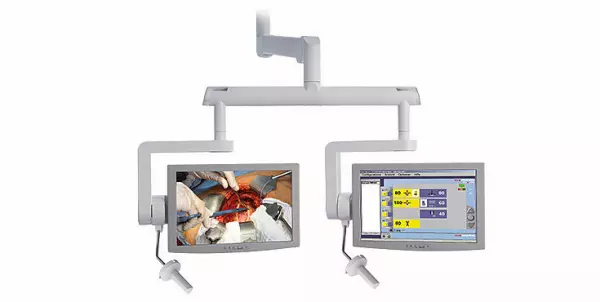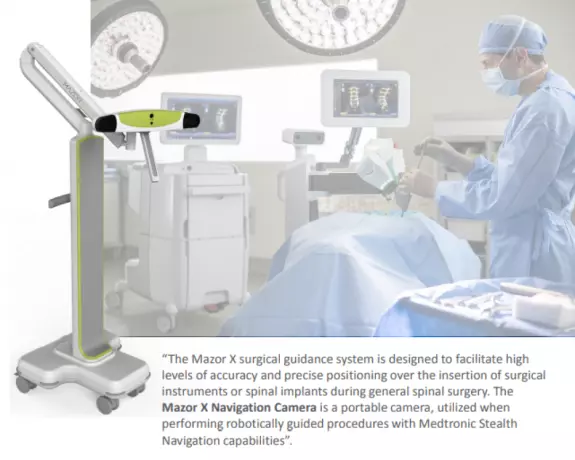
Telemedicine No wonder that digital or picture documentation of surgical procedures and live oper...
Portal and digital medical technology fair of the largest MedTech cluster in Germany

Telemedicine No wonder that digital or picture documentation of surgical procedures and live oper...

Mazor X surgical guidance system
“The Mazor X surgical guidance system is designed to facilitate high levels of accuracy and pr...

Camera technology for medical technology, camera components for medical technology, camera heads for the medical industry, camera technology for medical products, endoscopy camera technology
The history of camera technology can be traced back to the 1880s. A German named George Eastman invented photographic film and began manufacturing it in 1885. Later he made the switch to celluloid film. In the same year, he introduced his first camera, called the Kodak. This was a simple box camera with a single shutter speed and a fixed-focus lens. It was inexpensive and came pre-loaded with 100 exposures. The camera was expensive, but it was easy to use. Unlike today's digital cameras, it didn't require any processing. In addition, a film developer had to be purchased and processed after every exposure. In the following years, manufacturers of cameras began offering cameras with hybrid AF systems.
As a result of the COVID-19 outbreak, many countries have begun to restrict surgical procedures. In the U.S., a temporary ban on elective surgeries was enacted in most states between March and May 2020. Other countries around the world have taken similar measures, reducing surgical procedures and reducing camera demand. This pandemic has heightened the need for new camera technologies. However, the demand for new cameras is expected to remain strong.
The advancement of artificial intelligence has fueled the development of new camera technologies. In the healthcare sector, robotics has enabled surgeons to take more accurate measurements without invasive procedures. With this, cameras are now able to identify diseases with greater precision and accuracy than ever before. Further, these cameras can detect tumors in a much smaller amount of time than ever before. In addition, they can recognize the presence of cancer cells. Moreover, thanks to the new sensor technologies, doctors can now perform more operations.
Despite the advancements in medical imaging, the market for medical cameras is not yet saturated. Initially, it was only consumers who began to adopt the technology. But the transition to digital for movie and professional video cameras has been underway for several years. Steven Sasson, a Kodak engineer, developed the first digital camera in 1975. The CCD device enabled the device to record black and white images on a cassette tape that could be read by a television monitor. Eventually, flash memory replaced the cassettes.
A proof of concept camera is one that has 64 light receivers, similar to the number of sensors found in the average smart phone. The device creates images, but it has a lower resolution than a normal camera. Future studies will focus on scaling up the technology. The camera is thin, which makes it portable and easily handled by people. It can also be used in many applications. It can be useful for patients who cannot undergo invasive procedures.
Among the numerous applications for the CCD sensor, endoscopy cameras are a popular choice for medical procedures. These minimally invasive procedures involve the use of instruments known as endoscopes. As the number of endoscopic procedures increases, so do the sales of medical cameras. These instruments are becoming more popular around the world. They also offer cost-efficient devices that can be easily transported. They enable state-of-the-art medical care for patients.
Become a digital exhibitor yourself in the online portal of the largest and best-known MedTech cluster region in Germany and inform the world of medical technology about your products and services as well as about news, events and career opportunities.
With an attractive online profile, we will help you to present yourself professionally on our portal as well as on Google and on social media.